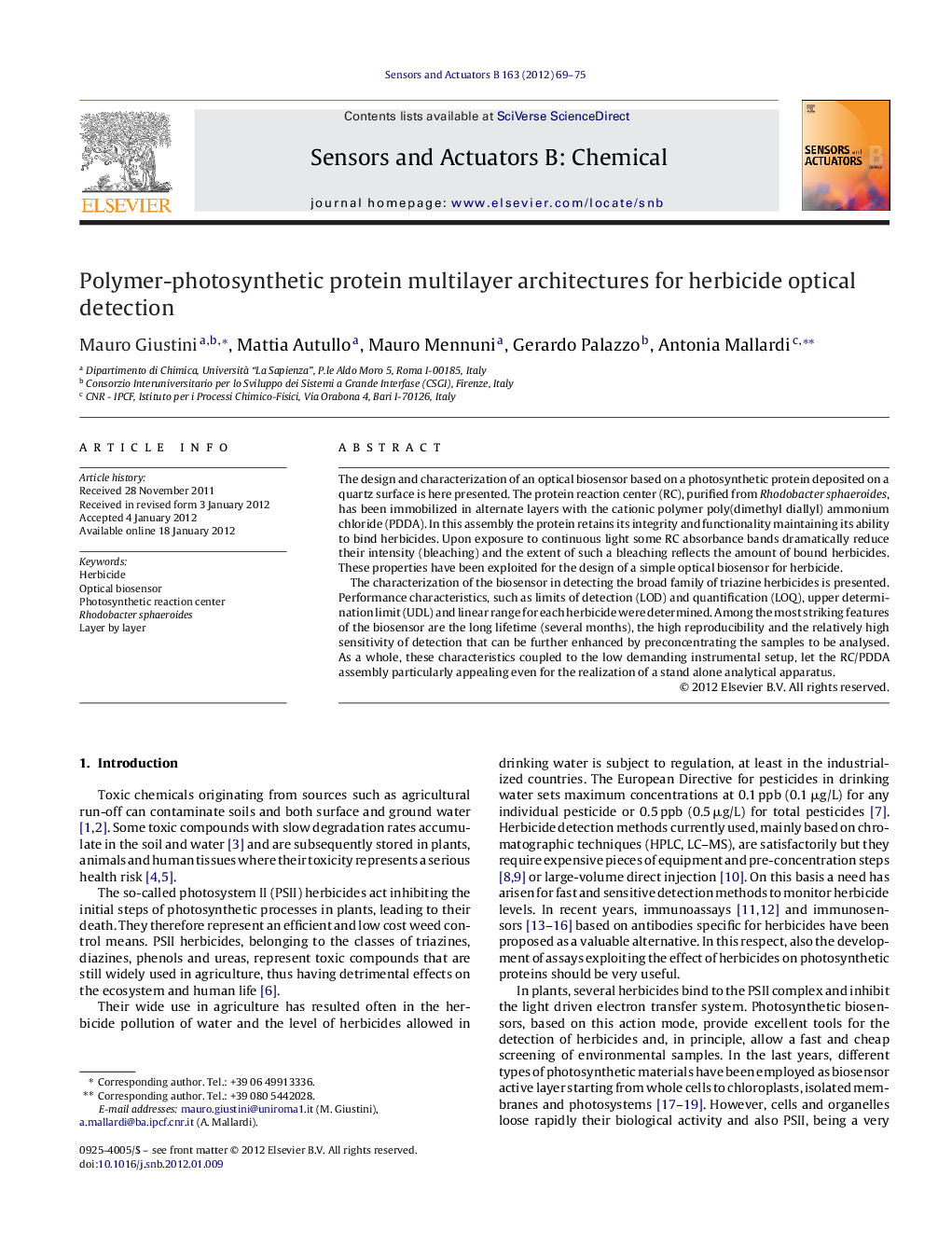| Article ID | Journal | Published Year | Pages | File Type |
|---|---|---|---|---|
| 742748 | Sensors and Actuators B: Chemical | 2012 | 7 Pages |
The design and characterization of an optical biosensor based on a photosynthetic protein deposited on a quartz surface is here presented. The protein reaction center (RC), purified from Rhodobacter sphaeroides, has been immobilized in alternate layers with the cationic polymer poly(dimethyl diallyl) ammonium chloride (PDDA). In this assembly the protein retains its integrity and functionality maintaining its ability to bind herbicides. Upon exposure to continuous light some RC absorbance bands dramatically reduce their intensity (bleaching) and the extent of such a bleaching reflects the amount of bound herbicides. These properties have been exploited for the design of a simple optical biosensor for herbicide.The characterization of the biosensor in detecting the broad family of triazine herbicides is presented. Performance characteristics, such as limits of detection (LOD) and quantification (LOQ), upper determination limit (UDL) and linear range for each herbicide were determined. Among the most striking features of the biosensor are the long lifetime (several months), the high reproducibility and the relatively high sensitivity of detection that can be further enhanced by preconcentrating the samples to be analysed. As a whole, these characteristics coupled to the low demanding instrumental setup, let the RC/PDDA assembly particularly appealing even for the realization of a stand alone analytical apparatus.
